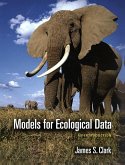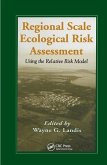The last decade has seen countless advances in the measurement and interpretation of the impacts of environmental heterogeneity upon organisms and ecological processes. Progress has been made at a variety of scales of organisation. Following a Symposium on Ecological Consequences of Environmental Heterogeneity, a team of international experts has collaborated to produce this volume. It discusses the effects of environmental heterogeneity; the effects of spatial and temporal heterogeneity on individuals, populations, communities and biodiversity; and the management and conservation implications of environment heterogeneity. This book will prove to be an invaluable reference work not only to advanced students but also established researchers working in the field.
Table of contents:
1. The world is heterogeneous: ecological consequences of living in a patchy environment A. J. A. Stewart, E. A. John and M. J. Hutchings; 2. Ecological heterogeneity: an ontogeny of concepts and approaches J. A. Wiens; 3. Generation of heterogeneity by organisms: creation, maintenance and transformation S. T. A. Pickett, M. L. Cadenasso and C. G. Jones; 4. Heterogeneity, diversity and scale in plant communities S. D. Wilson; 5. Plant response to patchy soils A. Fitter, A. Hodge and D. Robinson; 6. The effects of heterogeneous nutrient supply on plant performance: a survey of responses, with special reference to clonal herbs M. J. Hutchings, D. K. Wijesinghe and E. A. John; 7. Plant competition in spatially heterogeneous environments B. B. Casper, J. F. Cahill Jr and R. B. Jackson; 8. Light heterogeneity in tropical rain forests: photosynthetic responses and their ecological consequences J. R. Watling and M. C. Press; 9. Heterogeneity in plant quality and its impact on the population ecology of insect herbivores M. D. Hunter, R. E. Forkner and J. N. McNeil; 10. Foraging ecology of animals in response to heterogeneous environments J. S. Brown; 11. Habitat heterogeneity and the behavioural and population ecology of host-parasitoid interactions H. C. J. Godfray, C. B. Müller and A. R. Kraaijeveld; 12. The effects of heterogeneity on dispersal and colonization in plants M. Rees, M. Mangel, L. Turnbull, A. Sheppard and D. Briese; 13. Genetic variation and adaptation in tree populations D. H. Boshier and M. R. Billingham; 14. Food webs and resource sheds: towards spatially delimiting trophic interactions M. E. Power and W. E. Rainey; 15. Habitat destruction and extinctions: predictions from metapopulation models C. Dytham; 16. Environmental heterogeneity and species survival in degraded tropical landscapes R. T. Corlett; 17. Ecological experiments in farmland conservation D. W. Macdonald, R. E. Feber, F. H. Tattersall and P. J. Johnson; 18. Environmental heterogeneity: the effects on plants in restoration ecology J. P. Bakker; 19. Concluding remarks: a review of some open questions J. H. Lawton.
This excellent set of review chapters discusses the effects of environmental heterogeneity; the effects of spatial and temporal heterogeneity on individuals, populations, communities and biodiversity; and the management and conservation implications of environment heterogeneity. The book is an invaluable reference work for graduate students and researchers.
A wide-ranging review of the effects of heterogeneity on individuals, populations, communities and biodiversity.
Hinweis: Dieser Artikel kann nur an eine deutsche Lieferadresse ausgeliefert werden.
Table of contents:
1. The world is heterogeneous: ecological consequences of living in a patchy environment A. J. A. Stewart, E. A. John and M. J. Hutchings; 2. Ecological heterogeneity: an ontogeny of concepts and approaches J. A. Wiens; 3. Generation of heterogeneity by organisms: creation, maintenance and transformation S. T. A. Pickett, M. L. Cadenasso and C. G. Jones; 4. Heterogeneity, diversity and scale in plant communities S. D. Wilson; 5. Plant response to patchy soils A. Fitter, A. Hodge and D. Robinson; 6. The effects of heterogeneous nutrient supply on plant performance: a survey of responses, with special reference to clonal herbs M. J. Hutchings, D. K. Wijesinghe and E. A. John; 7. Plant competition in spatially heterogeneous environments B. B. Casper, J. F. Cahill Jr and R. B. Jackson; 8. Light heterogeneity in tropical rain forests: photosynthetic responses and their ecological consequences J. R. Watling and M. C. Press; 9. Heterogeneity in plant quality and its impact on the population ecology of insect herbivores M. D. Hunter, R. E. Forkner and J. N. McNeil; 10. Foraging ecology of animals in response to heterogeneous environments J. S. Brown; 11. Habitat heterogeneity and the behavioural and population ecology of host-parasitoid interactions H. C. J. Godfray, C. B. Müller and A. R. Kraaijeveld; 12. The effects of heterogeneity on dispersal and colonization in plants M. Rees, M. Mangel, L. Turnbull, A. Sheppard and D. Briese; 13. Genetic variation and adaptation in tree populations D. H. Boshier and M. R. Billingham; 14. Food webs and resource sheds: towards spatially delimiting trophic interactions M. E. Power and W. E. Rainey; 15. Habitat destruction and extinctions: predictions from metapopulation models C. Dytham; 16. Environmental heterogeneity and species survival in degraded tropical landscapes R. T. Corlett; 17. Ecological experiments in farmland conservation D. W. Macdonald, R. E. Feber, F. H. Tattersall and P. J. Johnson; 18. Environmental heterogeneity: the effects on plants in restoration ecology J. P. Bakker; 19. Concluding remarks: a review of some open questions J. H. Lawton.
This excellent set of review chapters discusses the effects of environmental heterogeneity; the effects of spatial and temporal heterogeneity on individuals, populations, communities and biodiversity; and the management and conservation implications of environment heterogeneity. The book is an invaluable reference work for graduate students and researchers.
A wide-ranging review of the effects of heterogeneity on individuals, populations, communities and biodiversity.
Hinweis: Dieser Artikel kann nur an eine deutsche Lieferadresse ausgeliefert werden.








